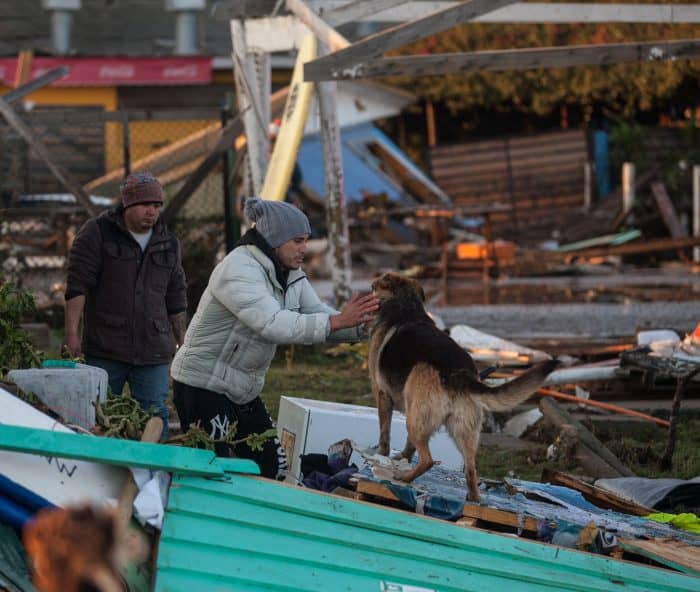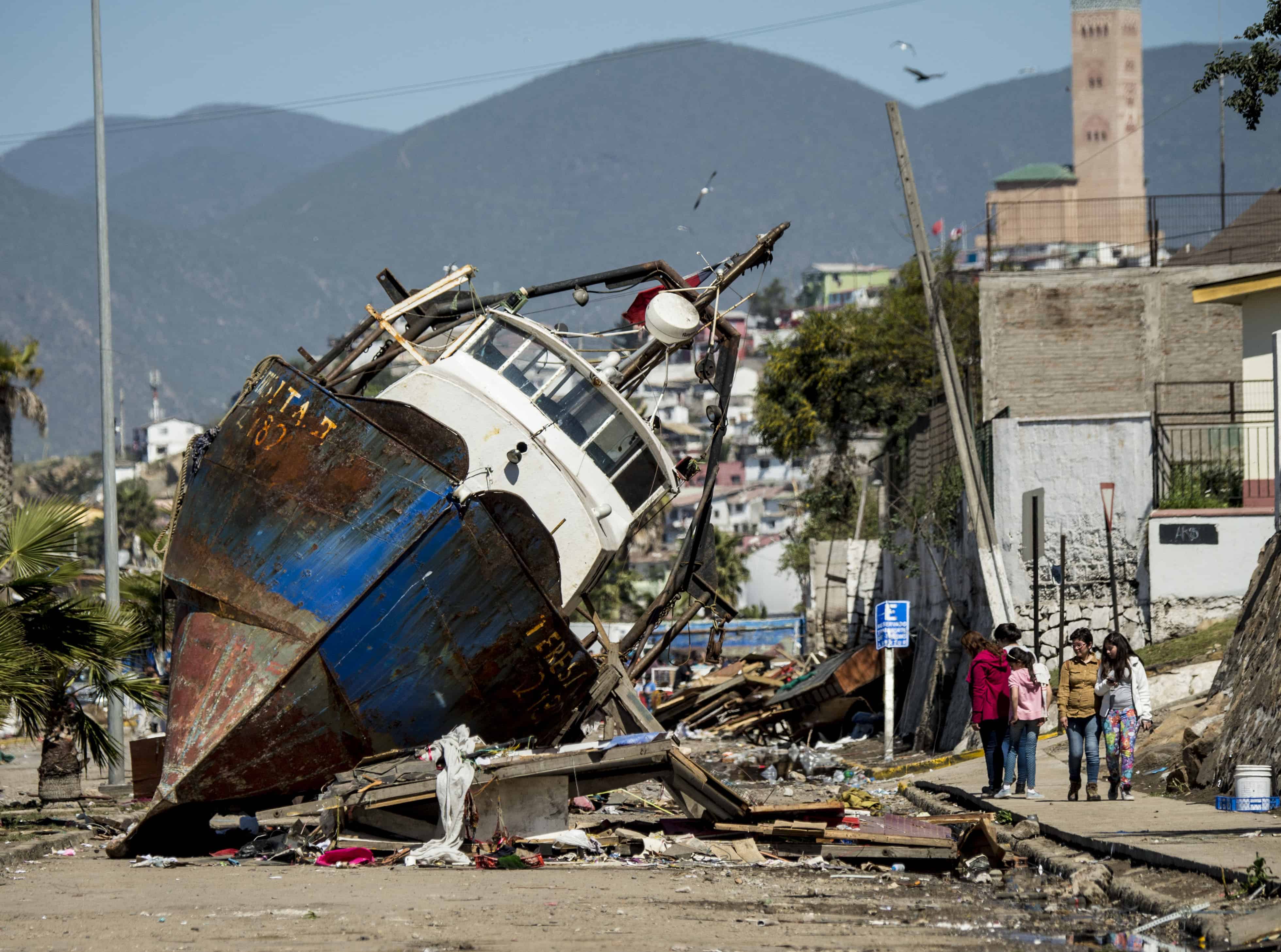ILLAPEL, Chile – Rattled Chileans recounted a night of terrifying aftershocks on Thursday after a powerful quake struck offshore, killing at least 11 and triggering tsunami waves that ravaged stretches of the coast.
The magnitude-8.3 Chile earthquake on Wednesday evening was the sixth most powerful in the history of the geologically volatile country and the strongest anywhere in the world this year, officials said.
Close to one million people were evacuated from Pacific coastal areas as a precaution as Chile sounded a tsunami alert, with warnings issued as far away as Japan and New Zealand.
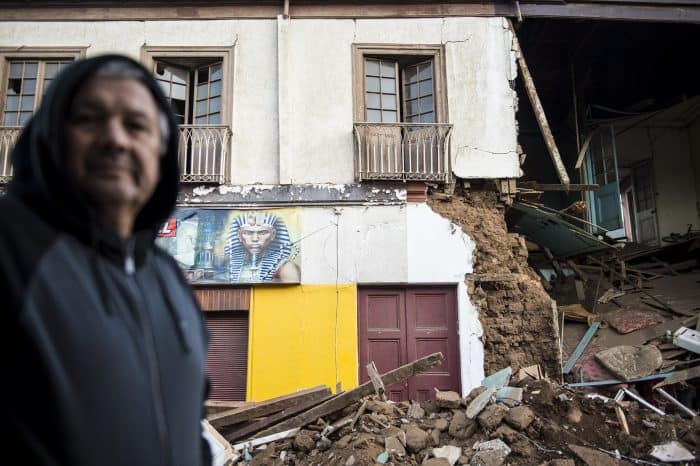
Residents took refuge on high ground as aftershocks jolted the region all night and into Thursday.
“It was a nightmare,” Maria Ramírez told AFP as she swept up debris outside her house in the badly hit coastal town of Illapel.
“We felt the tremors for a long time, too long. And then all the aftershocks — it was terrible,” she said. “I couldn’t stay standing, but luckily we made it out alive.”
The Chile earthquake occurred at a shallow depth, and the epicenter was located 228 kilometers (about 140 miles) north of the capital Santiago, a city of 6.6 million people, where there were scenes of pandemonium as thousands fled swaying buildings.
In the hours that followed, tsunami waves of up to 4.5 meters (15 feet) came crashing onshore in the region of Coquimbo, 400 kilometers north of Santiago, causing extensive damage to the port itself.
The fishing village of Tongoy was among the worst-hit, with television footage showing entire seafront areas destroyed. Two-meter waves also struck the tourist port of Valparaíso.
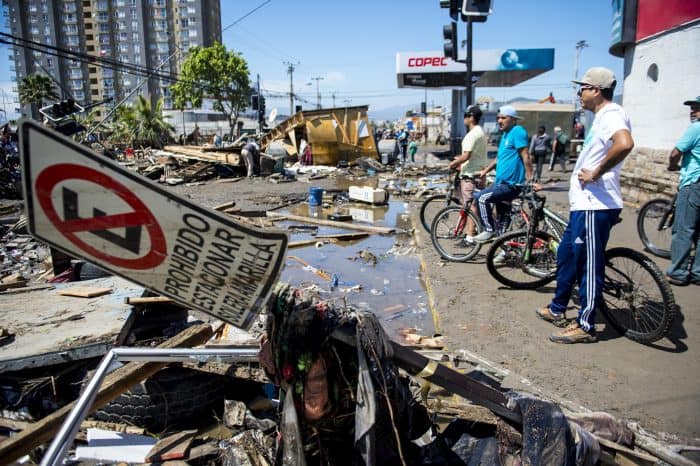
‘Ring of fire’
President Michelle Bachelet headed to the quake-hit area Thursday to assess the relief effort.
“We know this is a very difficult situation,” Bachelet said after meeting with a group of local fishermen in Coquimbo. “But we wish to salute the enormous cooperation of the population which ensured that — despite the scale of this earthquake — there are thankfully few victims.”
The most recent toll from the quake stood at 11 dead, with nine others injured, according to National Emergency Office (ONEMI) director Ricardo Toro. The last known victim was a man killed in Coquimbo.
At least 526 homes were damaged, most of them in the Coquimbo region, according to the ONEMI. A state of emergency was declared in the area, Interior Minister Jorge Burgos said.
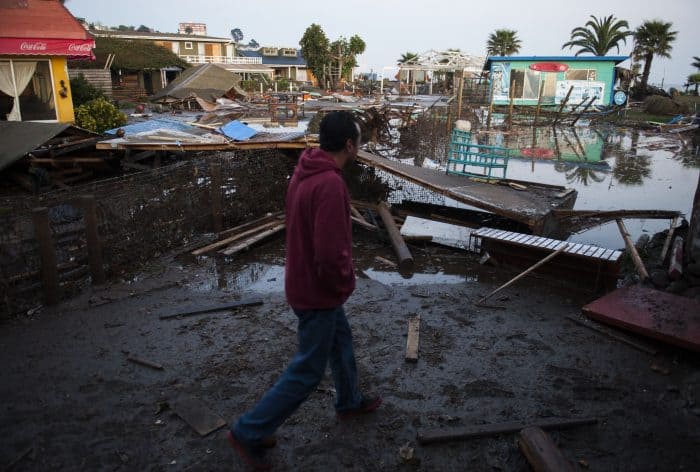
Chile lies on what is known as the “Ring of Fire” — an arc of fault lines that circles the Pacific Basin and is prone to frequent earthquakes and volcanic eruptions.
Five years ago in February 2010, a magnitude-8.8 quake off the southern Chilean coast killed more than 500 people and inflicted an estimated $30 billion in damages.
The Hawaii-based Pacific Tsunami Warning Center said tsunami waves were possible this time in French Polynesia, Hawaii and California, as well as smaller waves as far afield as Japan and New Zealand.
Japan Meteo agency issued a tsunami advisory — though not an alert — saying a wave up to one meter high could reach the entire east coast of Japan, from Hokkaido in the north to Okinawa in the south, early Friday.
The agency asked people to stay away from the coast, warning that a larger wave could follow the first.
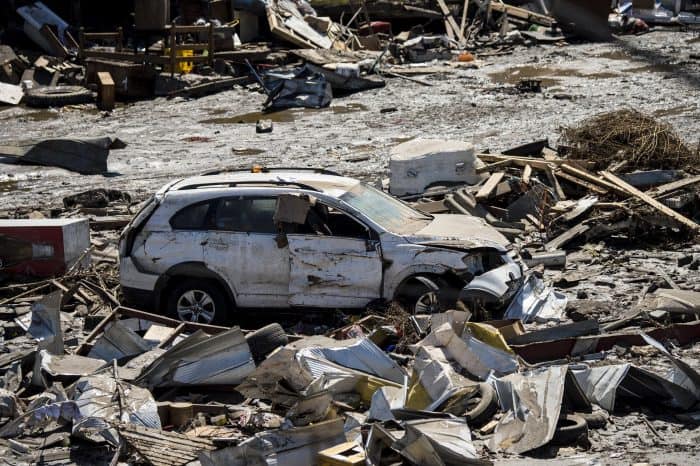
‘The longest time’
In Illapel, a city of 30,000, daybreak revealed the damage done, with power knocked out, shacks destroyed, store shelves overturned and the local cemetery a chaos of broken crosses, vases and coffins.
“It was the most horrific moment, a terrible thing,” local resident Ana Cortes, 35, told AFP. “Everything just kept moving, for the longest time.”
Facebook said it had activated a geolocation tool allowing people in Chile to reassure friends and loved ones. The Safety Check tool is accessed through Facebook’s regular interface, and lets members check whether their contacts are in a disaster zone, signal their own presence and let others know they are safe and well.
